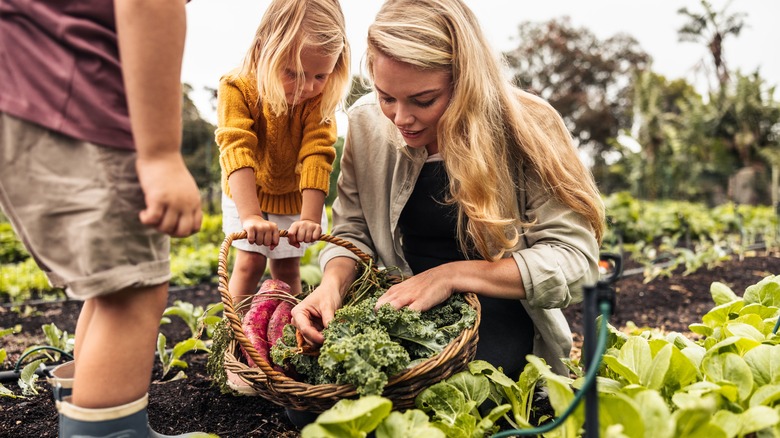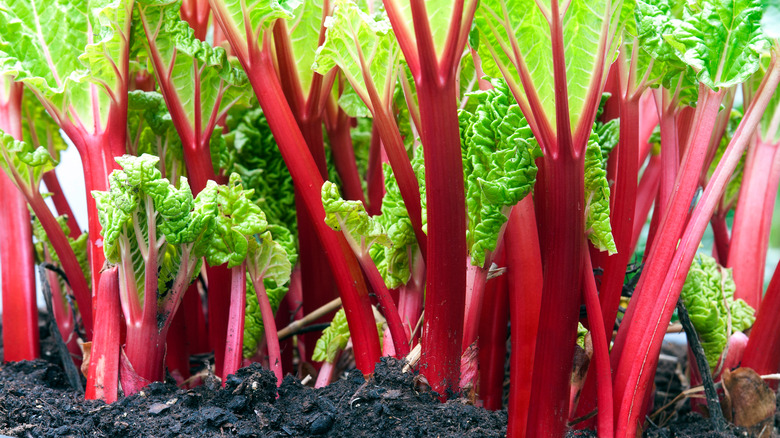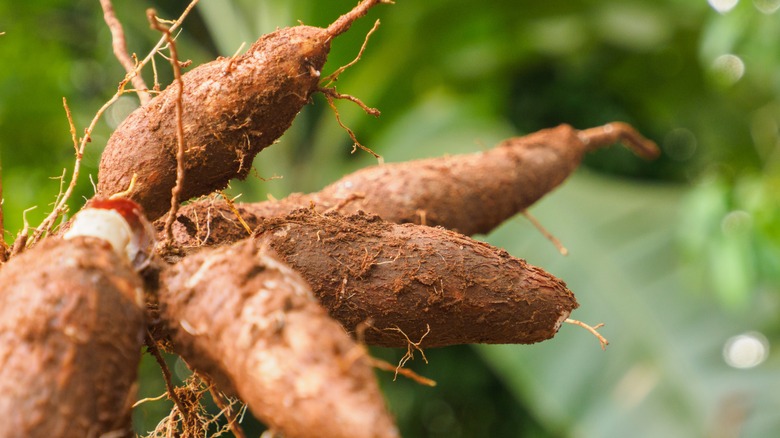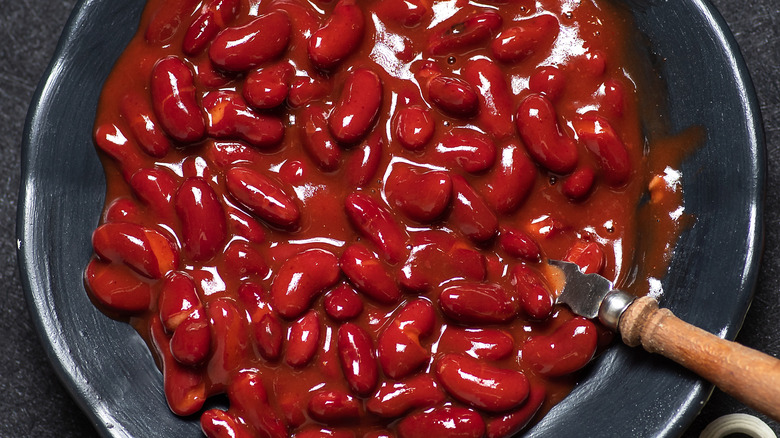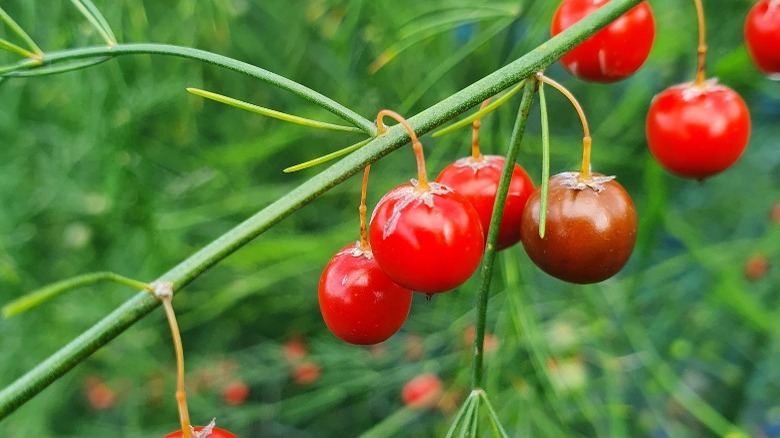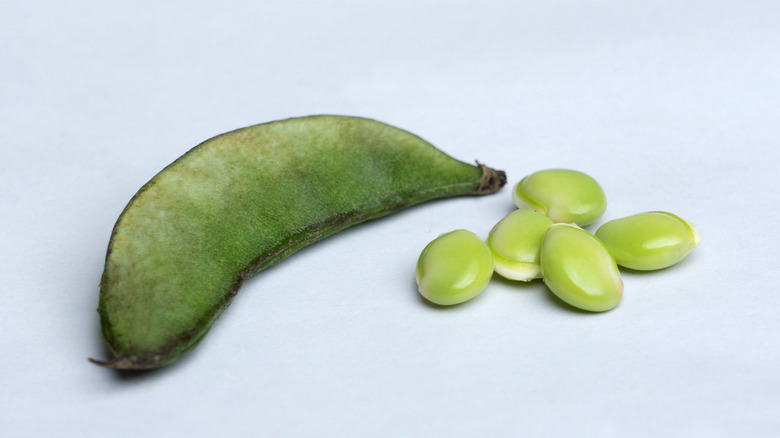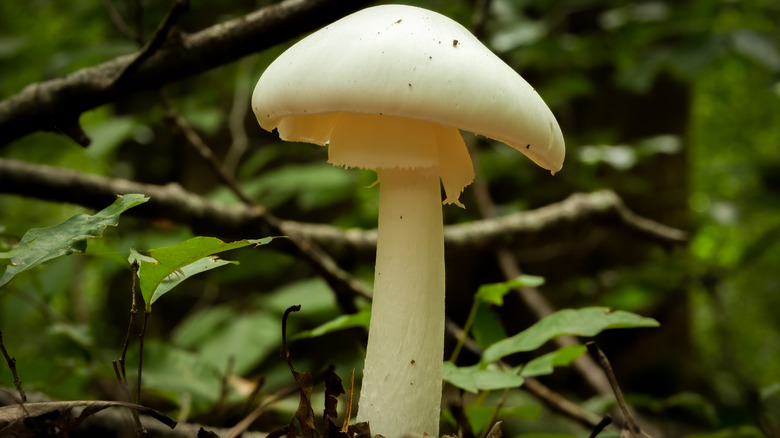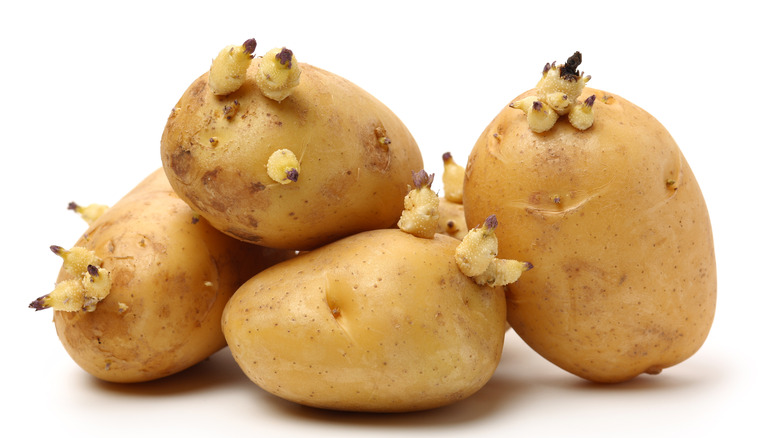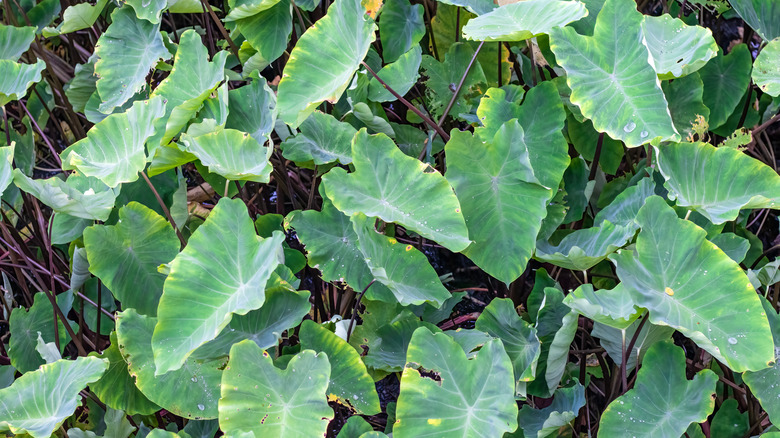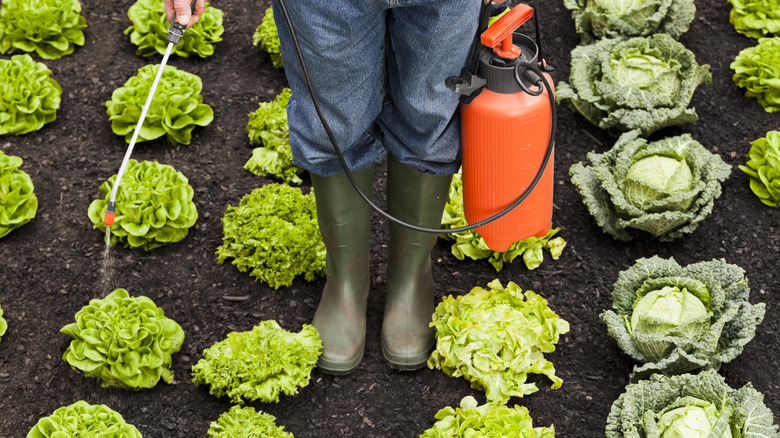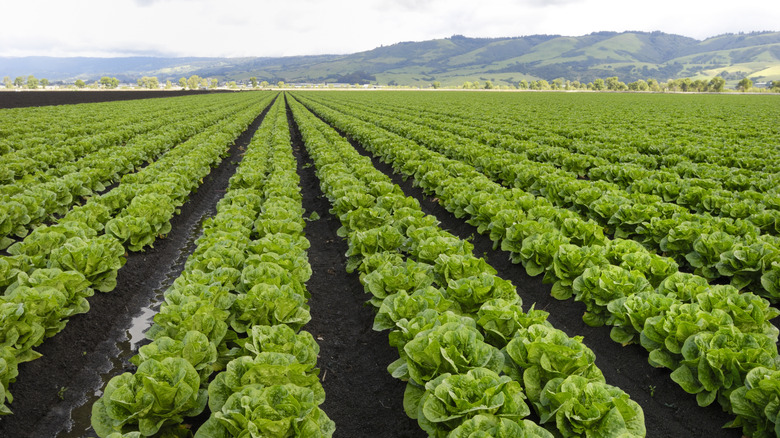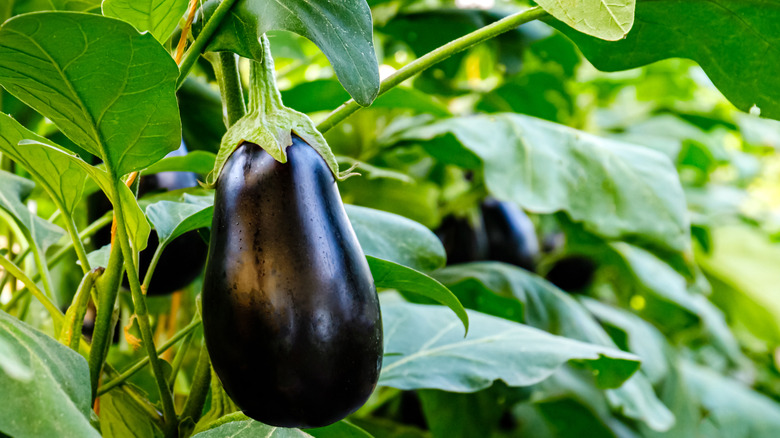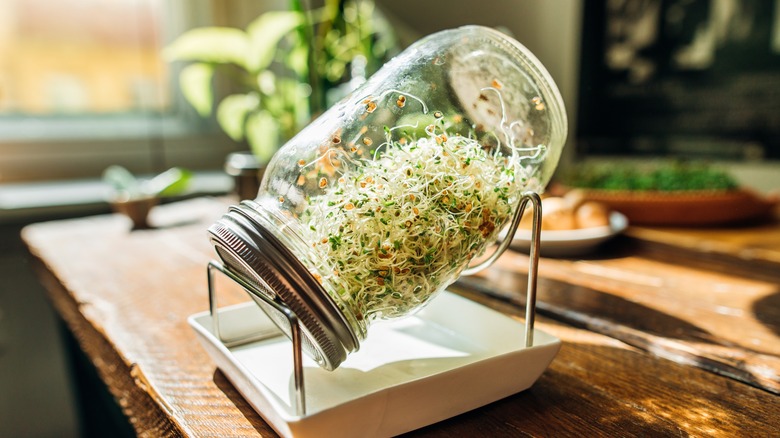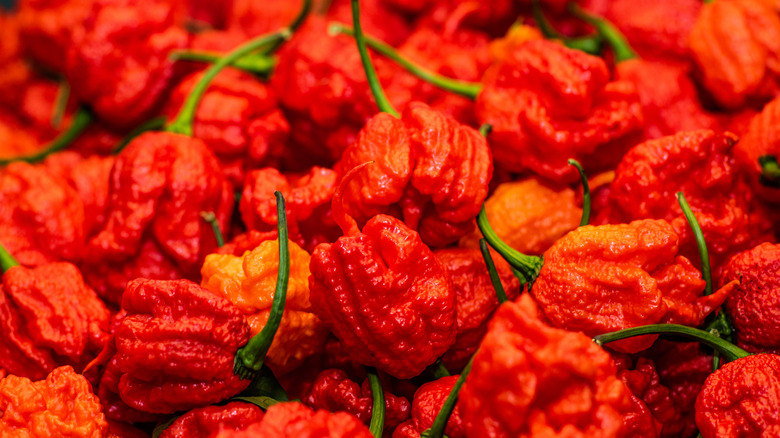The 13 Most Dangerous Vegetables
When we buy, forage, or grow our own vegetables, we often don't realize that the way we've learned to prepare them often keeps us safe. We don't necessarily boil beans until they're tender or cut the eyes off of potatoes because they taste better that way. For some vegetables, the most common preparations may prevent stomach problems. However, proper vegetable preparation and identification can also keep you from becoming paralyzed, having seizures, or needing a liver transplant. In the worst case scenarios, improper preparation of dangerous vegetables can lead you to death's door. It would take a ridiculous amount of some of these vegetables to send you to your grave, but others can send you there pretty fast.
Not every vegetable can be consumed raw, and some have very specific cooking requirements to keep them safe. So, before you grab those unfamiliar leaves from the marketplace and throw them into a smoothie, you'd better know what you're doing. After you learn which vegetables are capable of doing very bad things to you, you'll never look at them the same way again.
Rhubarb
Most of us know rhubarb from rhubarb pies. However, if you've decided to grow or purchase some raw for the first time, you should know that the leaves can be dangerous. So, don't think you can be thrifty by adding them to your salads. The problem with rhubarb leaves is that they have a lot of oxalic acid.
How sick you get depends on which how much rhubarb you ate, how much you weigh, and if you have certain health conditions. Mild side effects from consuming a little may just be a burning mouth or throat and digestion distress — like diarrhea and vomiting. However, the side effects can progress to kidney stones, seizures, or a coma. Some people have even died from rhubarb poisoning (per Oregon State Extension). Oxalate becomes deadly once you've consumed 825 milligrams per pound you weigh. So, a 154-pound person could die from eating only 0.9 ounces of oxalates (per World Journal of Nephrology). Luckily, a rhubarb leaf isn't all oxalates. While it's possible to die from smaller doses, a 154-pound person would generally need to eat 5.7 to 11.7 pounds of rhubarb leaves to consume enough oxalate to die (per Healthline). That's a mighty big salad.
Cassava (yuca)
Cassava is commonly used for making tapioca and sauces, using it as you would potatoes, and making bread and cakes. Before we get started talking about the dangers of cassava (yuca), we want to clear up a common mistake people make with the name of this plant. The root of a cassava plant is called "yuca" (not "yucca"), and the plant belongs to the Euphobiceae family. Meanwhile, the flowering yucca plant comes from the Asparagaceae family, and the edible parts aren't actually used for cooking. Now that we've gotten that out of the way, you'll want to know what makes cassava dangerous. Cassava is one of those foods you have to prepare just right to avoid getting sick because it contains cyanogenic glycosides, which turn into cyanide when you ingest it.
VinMec International Hospital states that improperly-prepared cassava can also lead to digestive, neurological, or respiratory problems. Severe poisoning can lead to death within half an hour if treatment doesn't happen in time.
It's also important to note that bitter cassava has the potential for causing more cyanide poisoning than sweet cassava (the type you're most likely to find in the U.S.). Luckily, if you peel the cassava root and cook it thoroughly until it is soft, it's safe to eat.
Kidney beans
One shortcut you never want to make when cooking chili is not cooking your kidney beans long enough. The FDA notes that the results of not doing so go beyond the gas you'd normally expect from eating beans to intense levels of vomiting and diarrhea. The culprit in raw or undercooked kidney beans is phytohaemagglutinin (PHA), which is a type of lectin that plants tend to use to protect themselves from animals that might like to consume them in the wild.
If you start out with uncooked beans rather than canned, the FDA says you need to soak them for at least five hours. You'll then want to dump the soaking water and rinse them before cooking. Cooking them for 30 minutes will keep you from getting sick from PHA, but they'll still be undercooked for your tastes since the normal cooking time for kidney beans is 90-120 minutes. However, cooking them for a half hour will keep you from having to run to the restroom after you eat them.
Asparagus
Overall, asparagus is an extremely healthy vegetable to eat. However, not all parts of the plant are edible. If you've ever grown asparagus, you may have noticed bright red berries that look like cherry tomatoes growing among the asparagus. Beware that eating asparagus berries or touching the young shoots can have negative consequences.
According to the North Carolina Extension office, if you touch the young shoots of asparagus as they first pop out of the ground, it's possible to get a rash from them. The plant also grows red berries toward the end of summer, but you've never seen them for sale at the grocery store or farmer's market because eating them causes digestive distress. According to the Pharmacognosy Review, eating asparagus berries can also even cause a pregnant person to lose their baby. Thankfully, that odd smell emanating from the toilet within a couple of hours of eating asparagus is normal and not an indication you've eaten too much asparagus.
Lima Beans and butterbeans
As long as you cook your lima beans or butterbeans (baby limas) well, you shouldn't have to worry about them being toxic. However, you should never eat them raw straight out of the pod or undercooked. Like cassava, lima beans contain glucosides to protect them from herbivores who might want to eat them in the wild. In lima beans, the glucoside that turns to cyanide is linamarin, and chewing and digesting the beans activates it.
Wild butterbeans have an extremely high level of cyanide in them, but farming regulations limit the amount of cyanide allowed in domesticated varieties to a much lower level. According to the Oregon State University Extension Service, boiling lima beans for more than 30 minutes should remove 80% of the cyanide, which is enough time to soften them nicely. If you do happen to eat raw butterbeans, you may not notice that they've made you sick until a few hours later. The CDC says that early symptoms of cyanide poisoning are vast and can include heart issues, breathing issues, weakness, and vomiting. Extreme poisoning can lead to seizures, a coma, or even death.
Wild mushrooms
Bringing home a wild mushroom that you've foraged can be exciting. However, it can also be deadly if you don't know what you're doing very well. Most people know you can't eat just any mushroom that you find, but the real problem comes with poisonous mushrooms that foragers get mixed up with edible ones. And we probably don't have to tell you that making such a mistake can ruin your organs — or kill you.
Two deadly mushrooms that people mistake for edible ones are death caps and destroying angels. If you think you've found straw mushrooms (Volvariella volvacea), accidentally cooking up death caps (Amanita phalloides) can do exactly what the name makes you think it can. A report by the CDC indicates that surviving patients may end up with neurological damage or be in need of liver transplants. True to its name, the destroying angel (Amanita verana) will destroy your insides if you mistake it for an edible mushroom like the meadow mushroom (Agaricus campestris). Similar to death caps, Cornell University states that destroying angels are likely to kill you or leave you in need of a liver transplant.
Potatoes
Early humans in Peru found potatoes would make them sick, so they avoided them until about 8,000 years ago when they noticed animals eating clay with them. It turned out that the glycoalkaloids in the potatoes — which would normally make them sick — would stick to the clay during the digestive process to make eating potatoes safe. Since then, Peruvians have cultivated over 5,000 types of potatoes. While there are still potatoes best eaten with clay, potato farmers have done a good job of selecting potatoes with less protective chemicals. However, that doesn't mean that potatoes don't still have the potential to make you extremely ill.
The potato tuber (the part we eat) has the least amount of glycoalkaloids while the flowers and sprouts have the most. So, if you've wondered why you're not supposed to eat the sprouts, that's why. The amount of glycoalkaloids actually increases the longer it is exposed to light in the grocery store or in your pantry, so be sure to store your potatoes in the dark. Green under the skin indicates a high amount of solanine. According to the Centre for Food Safety, mild cases of glycoalkaloid poisoning will give you cramps, diarrhea, and vomiting. More serious cases can have neurological side effects — ranging from eyesight problems and confusion to weakness and tremors. While it's possible to eat a fatal amount of glycoalkaloids, a potato with that amount of toxin would be bitter and leave your mouth burning, so you wouldn't eat it anyway.
Taro
Taro leaves and tubers taste pretty great cooked, but if you make the mistake of eating them raw in a salad or blended into a smoothie, it's a mistake you'll (hopefully) live to regret. First of all, they're going to sting and burn everything they touch as they go down, which should be your first hint that something is wrong with eating them. When you chew the raw leaf or tuber, it releases oxalate crystals, which shred everything they touch. After you've ingested raw taro, it will burn going down. If you realize the error of your ways, you'll definitely not want to try to induce vomiting because it will burn coming back up, too. It may also leave you with stomach cramps for a couple of hours — or days — at a level that will make you wish you knew not to eat them raw. You actually need to cook taro leaves or tubers for at least 30 minutes to keep them from hurting you. It's also important to wear gloves while touching unpeeled taro roots to avoid skin irritation (per Environmental Health Review).
In most cases, you can simply expect mouth or digestive pains from eating raw taro, and you'll just have to ride it out. However, if your mouth and tongue start to swell, and you find yourself having difficulty breathing and swallowing, you'll want to seek emergency help.
Dirty dozen vegetables
You've likely heard of the "dirty dozen," which are the twelve fruits and vegetables that the Environmental Working Group (EWG) identifies each year as being likely to have more pesticide residue than others. In 2023, The EWG identified spinach, kale, collard greens, mustard greens, peppers, and green beans as being the "dirtiest" veggies. Some other veggies that have been on the dirty dozen list previously include tomatoes, celery, and potatoes.
When the EWG did their sampling in 2023, they sometimes found as many as 13-23 pesticides on a single crop. Greens and peppers seemed to have more pesticides than any other veggie or fruit. Even with the government banning and regulating more dangerous chemicals, the EWG found a banned neurotoxic pesticide on 6% of the green beans they sampled. You can't always trust the farmers to follow the rules to keep you safe. A 2016 review in Frontiers in Public Health indicates that pesticides can have numerous negative side effects ranging from neurological and digestive issues to cancer or reproductive problems.
The EWG suggests shopping for organic produce when it comes to the dirty dozen. Peeling off the skin helps a lot. You can also remove some pesticides by scrubbing them with water, soaking them in baking soda water, or rinsing them with ozonated water. Boiling and blanching also help reduce pesticides.
Leafy greens
Leafy greens like lettuce and spinach are among the foods that are most likely to be recalled for harboring dangerous pathogens like E. coli or listeria. Other pathogens you might find on leafy greens include Salmonella and Cyclospora. Contamination can come from the soil or irrigation system or from human or animal waste. They can also become contaminated by dirty hands or equipment during processing, as well as in transport trucks, refrigerators, or kitchens.
The CDC reports over 2,000 people became sick from eating leafy greens contaminated with E. coli or listeria between 2014 and 2020. Certain categories of people, like those who are immunocompromised or pregnant, are more likely to develop serious side effects from eating infected greens. Around 24% of those 2,000 people ended up in the hospital, but only 0.9% died (18 people in total).
The CDC says refrigeration doesn't kill pathogens like listeria, but heating to 165 degrees Fahrenheit or above does. However, most of the outbreaks were related to lettuce, so heating wasn't an option. However, there is good news; vinegar kills pathogens on leafy greens (per Food Safety News). So, switch out ranch for vinegar on your salads or simply rinse your raw greens with vinegar, and you'll find yourself a lot safer the next time there's a romaine lettuce recall.
Eggplants
Like other nightshades, eggplants contain solanine, which can be dangerous or even deadly depending on how much you consume. The average eggplant has 11 milligrams of solanine, and the EFSA Journal says that people start to show symptoms of solanine poisoning with as little as 0.5 milligrams of solanine per pound of bodyweight, which would be as little as 5.8 eggplants for a 150-pound person. Low-grade toxicity can lead to stomach problems like digestive pain, vomiting, or diarrhea. However, the symptoms can extend to paralysis and breathing difficulty, with even comas, heart failure, and death possible. The EFSA Journal says that 1.3 to 2.3 milligrams of solanine per pound of body weight would be deadly. So, a 150-pound person would have to eat 17 to 31 eggplants to succumb to death by eggplant. That's a whole lot of baba ganoush.
Medical News Today notes that the leaves and tubers of eggplants are also dangerous and can cause a burning throat, stomach ache, and vomiting if you consume them. Even worse, eating these plant parts can lead to heart arrhythmias and even death.
Sprouts
Sprouts have become popular because of their nutritional and health value. However, if you find bean, grain, vegetable, nut, and seed sprouts for sale, it's important to note that eating raw sprouts can be very risky. Their warm and humid growing environment is also a great environment for pathogens like E. coli, listeria, and Salmonella. The FDA documented 48 individual sprout contamination outbreaks in 20 years. Of the nearly 2,500 illnesses that were caused by bad sprouts, fewer than 7% ended up in the hospital and only 0.1% people died (three total). The majority of these outbreaks occurred with alfalfa sprouts, and Salmonella was usually the culprit. However, clover sprouts, mung bean sprouts, and chia sprouts have also ended up on the naughty list. And the people most likely to succumb to extreme symptoms were older, younger, pregnant, and immunocompromized individuals.
If you're going to start getting sick from eating bad sprouts, you can expect symptoms to hit on the same day you eat them (six hours from consumption) to three days later (72 hours from consumption) (per FDA). If it's three days later, you may not make the connection to the bad sprouts — but you will likely be making some connections with your toilet in the bathroom as cramps turn into diarrhea and vomiting. To avoid this, ahem, unsavory outcome, you might want to consider cooking your sprouts before you eat them.
Hot peppers
The Guinness record-holder for the world's hottest pepper belongs to the Carolina Reaper. The Carolina Reaper rates over 1.64 million Scoville Heat Units (SHU), which measures how much capsaicin it contains. In comparison, a mild bell pepper is 0 SHU, a medium jalapeño is 2,500 to 8,00 SHU, and a hot Thai chili is 5,000 to 100,000 SHU. Being able to eat hot food and super hot chile peppers can be a badge of honor, and you'll see numerous videos on social media where people attempt insane heat levels.
If your genetics gives you fewer capsaicin receptors, or you develop a spice tolerance over time, you can tolerate hotter peppers. The Cleveland Clinic lets us know that hot peppers can burn all the way down, from your tongue to your toosh, as it comes out in fiery diarrhea (at least it will burn like fire). If it doesn't get that far, you may end up with an extreme bout of burning vomit, full of stomach acids that can end up physically damaging your throat and esophagus. Hot pepper-eaters have also ended up at the ER after experiencing extreme headaches or chest pain. And if you already have a stomach ulcer, it can aggravate it tremendously. The hottest peppers have certainly sent people to the hospital, and they could kill you, but you would have to eat 1/50th of your weight in hot peppers (three pounds for a 150-pound person) to be getting a visit from the real grim reaper. A man managed to eat 10 of the world's hottest peppers in just over half a minute to set a world record in 2022. However, chowing down on three pounds of them isn't likely to happen.
